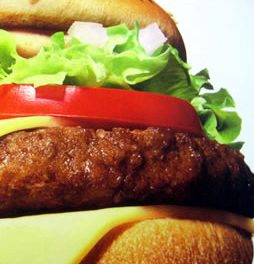"How did I get into this mess?" It's a dilemma many people face today. They're not happy with their weight, fitness, blood cholesterol, or overall health and energy, but they're not sure how they got there. Studies show that most people don't have an accurate view of their eating habits. The right kind of record-keeping can often supply people with the answers like nothing else can.
If your weight has been creeping (or leaping) upward and you're not sure why, keeping a record of everything you eat and drink may help spot the problem. But if a record's going to do you any good, it has to be accurate, and that can be challenging. The good news is you don't need to keep a record for weeks on end; studies show that a well-kept record for just three typical days is not improved by continuing.
To get the accuracy you need, keep track of everything as you go through the day. When people try to fill in a record by memory at the end of the day, they always forget valuable details. Most of the time, it's important to note not just what you eat and drink, but the particulars of how it's fixed or flavored. Fried? Topped with melted cheese? Regular or fat-free dressing?
Portion size is also key. If you just write down what you consume but not the amounts, you may be missing half (or more) of the problem. Studies show that most people tend to underestimate the amount they eat. A recent study in the Journal of the American Dietetic Association showed that even dietitians' food records underestimated their true caloric intake. These professionals, experienced and at least somewhat interested in keeping food records, had reported an average of a little over 200 calories a day below actual intake. Dieticians of comparable age and weight, however, underreported their calorie intake by more than 400 calories a day.
You don't need to carry measuring cups everywhere for three days, but if you're guessing at portion size, studies show that your accuracy will suffer. This gap between guessing and reality won't help. Instead of guessing, the American Institute for Cancer Research (AICR) recommends taking a few minutes at home to measure out some standard serving sizes, like one cup of cereal or pasta, for example, and take a good look at it, comparing it to the usual portion you've been eating. You don't have to use measuring cups to get a fair approximation of standard servings. An average adult fist is roughly equal to one cup, a deck of cards or computer mouse for a three-ounce portion of meat, and four dice about equal to the size of one ounce of cheese.
You may not need to keep a record of everything that passes your lips. If you are already aware of a habit that may be key, you can simply keep a record of that. If you are struggling to meet the goal of five to ten daily servings of fruits and vegetables, as advised by health experts, you might just keep track of your produce consumption. If you suspect snacking is your downfall, just write down what you eat and drink between meals. You might even mark a "B," "S," or "H" next to each one to indicate whether you snacked out of boredom, stress, or true hunger. If you have a vague suspicion that you don't take that lunchtime walk as often as you intended, keep track of physical activity.
Depending on how frequently it occurs, keeping track of a specific behavior may require about 10 days to give you an accurate picture. Avoid guilt and perfectionism; focus on trying to really understand your current habits. For some people, rather than focusing on their less-healthy choices, keeping track of on-target behavior better fosters the "can do" attitude necessary for successful change.
AICR










